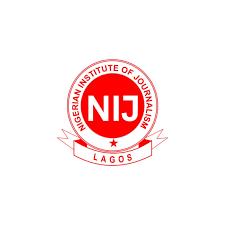Chemistry Keypoints: Chemical equilibrium; Chemical equilibrium is a fundamental concept in chemistry that describes the state of a reversible chemical reaction when the rates of the forward and reverse reactions are equal.
Study other chemistry keypoints here
In this article, we will explore reversible reactions, factors that govern the equilibrium position, dynamic equilibrium, Le Chatelier’s principle, and the equilibrium constant. We will also provide simple examples to illustrate these concepts without requiring complex calculations.
Chemistry Keypoints: Chemical equilibrium
Reversible Reactions and Equilibrium
Reversible reactions are chemical processes that can proceed in both the forward and reverse directions. These reactions reach a state called dynamic equilibrium, where the concentrations of reactants and products remain constant over time. Dynamic equilibrium occurs when the rates of the forward and reverse reactions are equal.
Le Chatelier’s Principle
Le Chatelier’s principle is a fundamental concept used to predict how changes in various factors affect the position of equilibrium in a chemical reaction. It can be summarized as follows:
“When a system at equilibrium is subjected to a change in temperature, pressure, concentration, or the addition/removal of a reactant or product, the system will adjust itself to counteract the change and partially or completely shift the equilibrium position.”
Factors Affecting Equilibrium
(i) Temperature
Temperature is a crucial factor that affects the position of equilibrium. In general, for reactions where heat is absorbed (endothermic), increasing the temperature will shift the equilibrium towards the products. Conversely, for reactions that release heat (exothermic), increasing the temperature will shift the equilibrium towards the reactants.
Example: Consider the reaction of steam (H2O) with iron (Fe) to form iron(III) oxide (Fe2O3):
[3H2O(g) + Fe(s) ⇌ Fe2O3(s) + 3H2(g)]
This reaction is endothermic, and increasing the temperature will shift the equilibrium to the right, favoring the formation of Fe2O3.
(ii) Pressure (for Gases)
Pressure primarily affects the equilibrium position in gas-phase reactions. According to Le Chatelier’s principle, increasing the pressure will shift the equilibrium towards the side with fewer moles of gas molecules.
Example: Consider the equilibrium between nitrogen dioxide (N2O4) and nitrogen dioxide (NO2):
[N2O4(g) ⇌ 2NO2(g)]
Increasing the pressure will shift the equilibrium to the right, favoring the formation of NO2 because there are fewer moles of gas on the right side.
(iii) Concentration
Changing the concentration of reactants or products can also affect the position of equilibrium. Adding more of a reactant will shift the equilibrium towards the products, while adding more of a product will shift the equilibrium towards the reactants.
Example: Consider the reaction of hydrogen (H2) and iodine (I2) to form hydrogen iodide (HI):
[H2(g) + I2(g) ⇌ 2HI(g)]
If you add more H2, the equilibrium will shift to the right, favoring the formation of HI.
Equilibrium Constant (K)
The equilibrium constant (K) is a numerical value that quantifies the position of equilibrium for a given reaction at a specific temperature. It is defined as the ratio of the product concentrations to the reactant concentrations, each raised to the power of their respective coefficients in the balanced chemical equation.

Where:
- (K) is the equilibrium constant.
- ([C]), ([D]), ([A]), and ([B]) are the molar concentrations of the products and reactants.
- (c), (d), (a), and (b) are the coefficients of the products and reactants in the balanced equation.
Changes in temperature, pressure, or concentration can affect the value of the equilibrium constant, shifting the position of equilibrium accordingly.
Conclusion
Chemical equilibrium is a dynamic state in reversible reactions where the rates of the forward and reverse reactions are equal.
Le Chatelier’s principle helps predict how changes in temperature, pressure, and concentration affect the position of equilibrium, while the equilibrium constant quantifies this position. Understanding these principles is crucial for chemists to control and optimize chemical reactions in various applications, from industrial processes to environmental chemistry.












